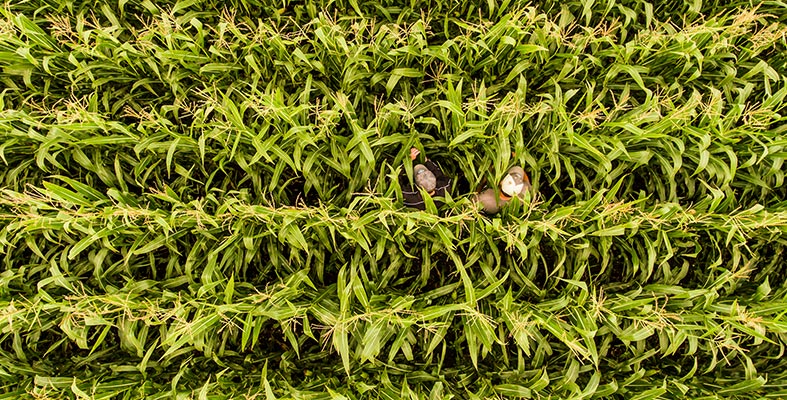Corn Rootworm: The Most Corn-on-Corn Since 2012 and a Renewed Interest in SmartStax
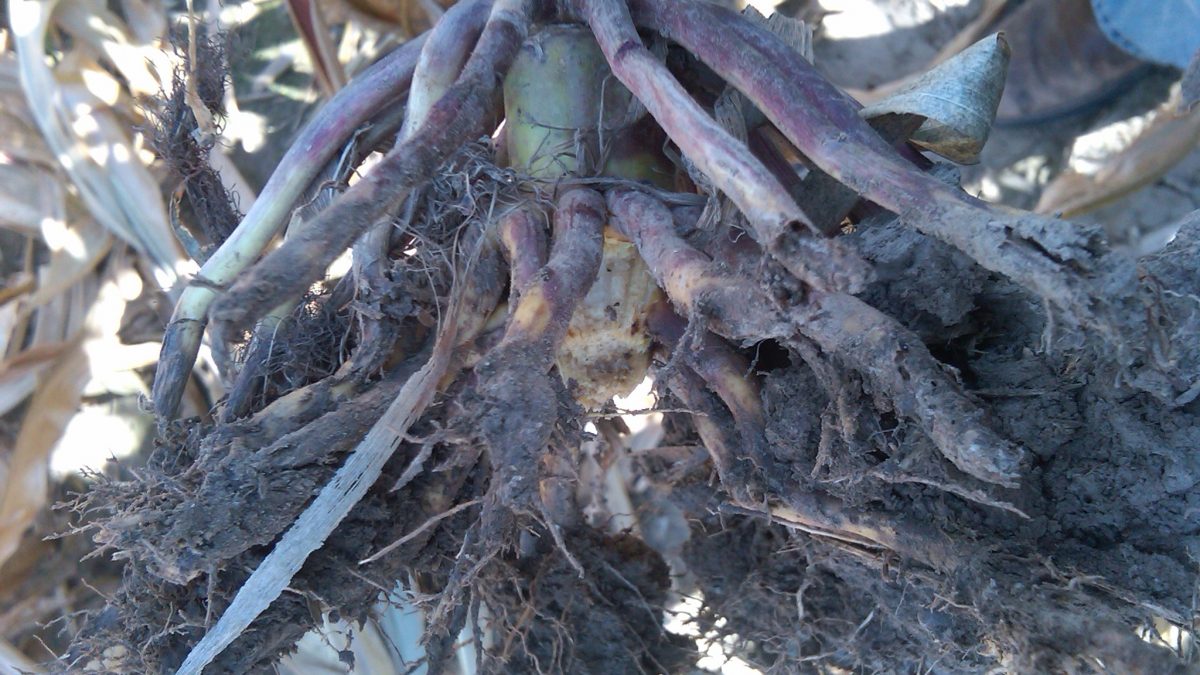
Corn rootworm (CRW) is not new to the tri-state area, but it has generated more talk this season. Northern and western corn rootworm populations have been documented in northern Minnesota and North Dakota. Typically, this has only been a southern MN and eastern South Dakota issue. However, with the most corn-on-corn we have seen since 2012, populations are on the rise.
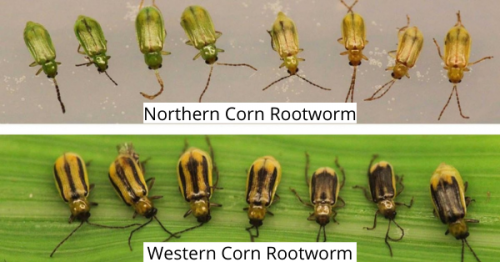
Northern vs. Western Corn Rootworm – image via Iowa State https://crops.extension.iastate.edu/cropnews/2016/06/guidelines-using-sticky-traps-assess-corn-rootworm-activity
Corn rootworm can cause extensive yield losses. Often, CRW causes anywhere from 15-45% yield damage to your corn. Predict losses by measuring damage to root development and silk feeding. CRW feeding on corn roots in the larvae stage causes yield loss. Larvae injure the roots and significantly inhibit nutrient and water uptake.
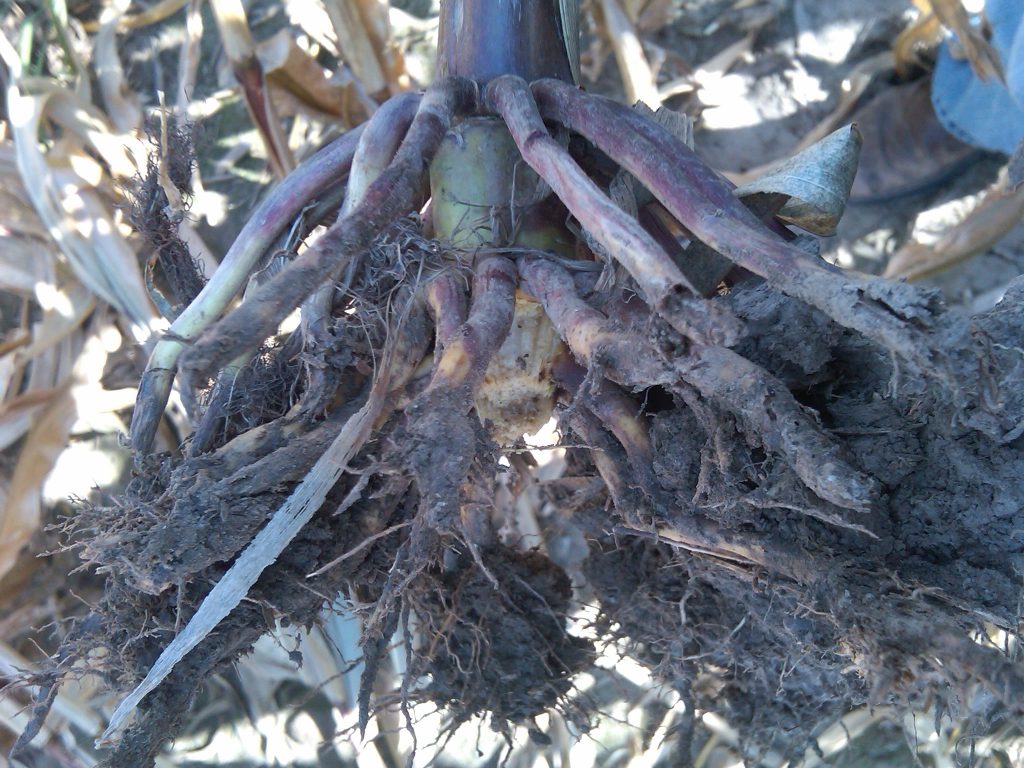
Typical root injury
Consequently, less-developed roots lead to a weaker plant, resulting in goose necking and/or being susceptible to wind damage, as seen below. Adult corn rootworms can also cause significant yield loss during pollination. The adults feed on the silks, which cannot capture pollen. Adult corn rootworm beetles occupy later-planted and later-silking corn that attract large numbers of beetles from neighboring fields.
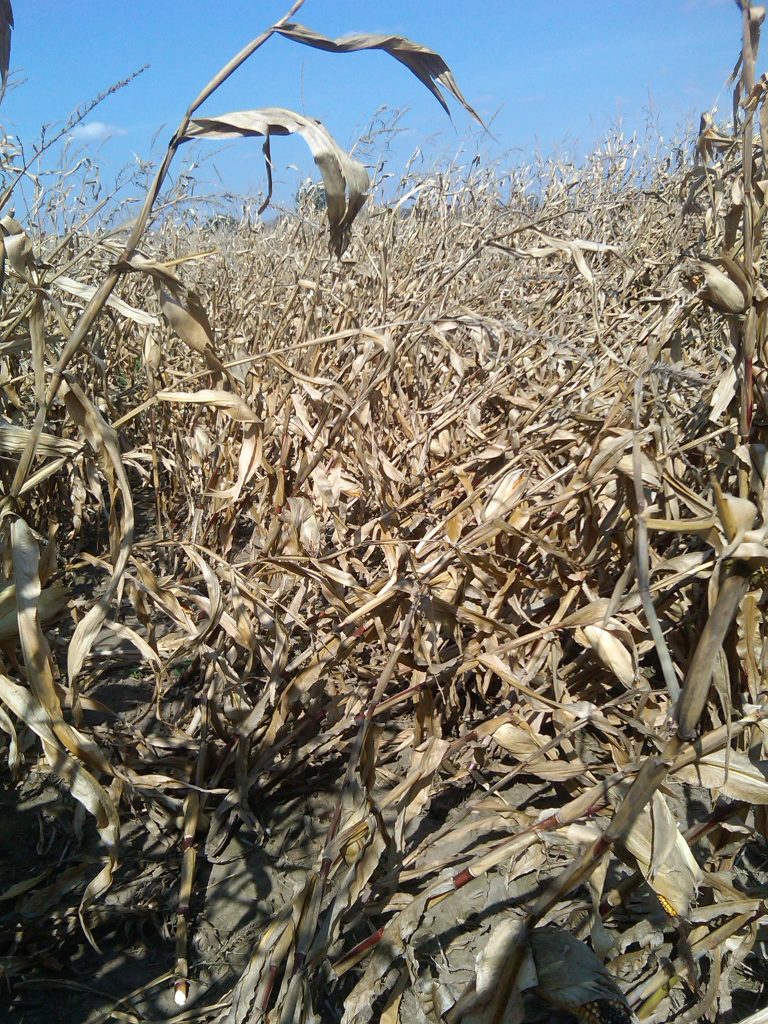
Severe case of wind affecting late season standability
Tactics for next season:
- Rotation, rotation, rotation. You will never have a rootworm issue when rotating crops. We recommend using a CRW trait when corn-on-corn has been grown for three or more years.
- Smart Stax products are the greatest defense against larvae.
- In-furrow insecticide: This can help decrease larvae activity and protect seedlings.
- In-season insecticides can lead to lackluster results with partial control.
- Control volunteer corn: This applies to rotation as well. If there is a host, chances are greater that the beetles will still be present the following year.



